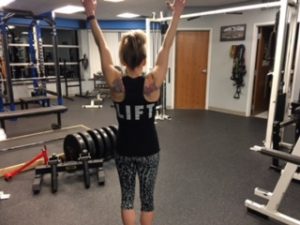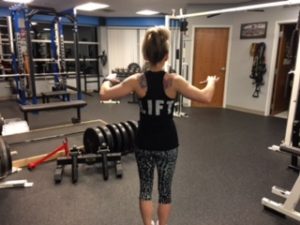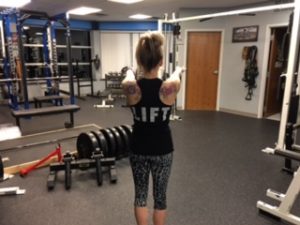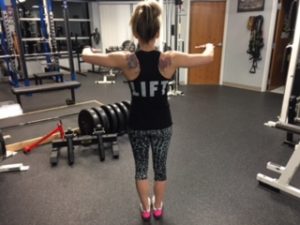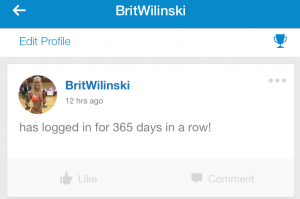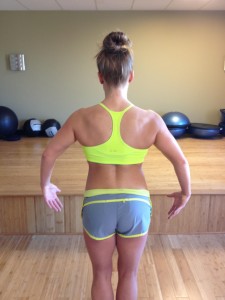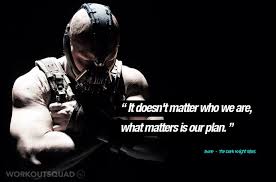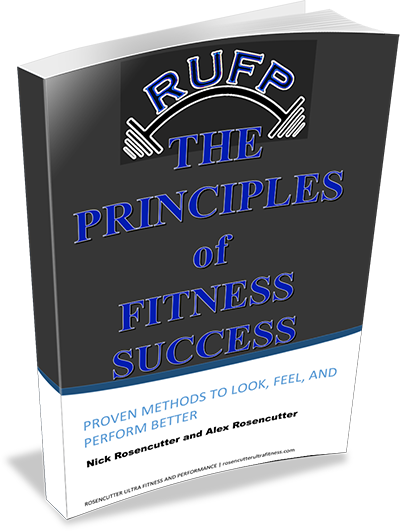Aerobic is the Word
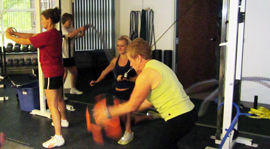
Do you know what kind of effects you are creating on your body when you do your cardio or conditioning work? Read this article by Nick Rosencutter to find out more………………
………………………………………………………..
For many people, “cardio” is a term that is thrown around when it comes to one facet of training, and it is thrown around without much understanding behind what is being said. Cardio is short for cardiovascular, which would basically refer to any activity that you do that trains your heart in some capacity. Rather than use such a generic, undefinitive term, why don’t we use something more specific that actually describes what we are trying to do? I prefer to use the term conditioning or energy systems development when talking about developing physiological capabilities in order to elicit a specific performance. Call it whatever you want; when it comes down to it, each energy system and its subsets needs to be developed to certain levels at certain times and for certain reasons depending on what it is that you are training for. The main energy systems can be broken down like this.
Aerobic
- Capacity
- Power
Anaerobic
-Glycolytic
- Capacity
- Power
-Alactic
- Capacity
- Power
Whether you call it “cardio,” “conditioning,” or “energy systems development,” there have commonly been two schools of extreme thought when it comes down to the modalities used. On one end, you have the excessive endurance, long distance, slow, steady paced group, who swears by doing nothing but endurance work (actually aerobic capacity work), and on the other end, you have the “all you need is high intensity interval” group, who seems to think that if you aren’t laying flat on your back after puking by the end of your workout that you haven’t conditioned appropriately. (actually anaerobic glycolytic work)
While the “aerobic endurance” group dominated for quite some time, over the course of a large part of this past decade, “aerobic” training has taken a lot of heat from many (and in certain circles still given unbalanced attention). It has been deemed useless and pretty much dumped and replaced with all anaerobic high intensity work. I’ll be honest, I even started to go this route myself at one point in time. Well, if you pick up a physiology book and actually study these energy systems and how they work with one another in depth, you will realize real fast that you’d better not skip out on your aerobic work, and you will also realize that, depending on the person and task at hand, all of the energy systems and their subsets will probably need to be trained to some extent at some point in time.
In case you don’t know much about energy systems, lets do a brief summary. Your body uses whats called ATP as its fuel source to promote physical activity. These different energy systems are utilized to replenish this ATP in order to continue physical activity. The aerobic system uses oxygen during its chemical processes and can produce a whole bunch of ATP; however, it can’t do it very fast because of all of the steps that it must go through to get the job done. For this reason, longer duration and generally lower intensity activity are taken care of with this system. (i.e. 5 mile run) This is also the most active system at rest. If you have poor aerobic development, your resting heart rate will be higher than desirable and you will have a much better chance of running into health problems as all of the body’s systems will suffer. That alone should end the debate.
The anaerobic glycolytic system works without oxygen and produces ATP pretty fast; however, it can’t produce a ton of it and can’t do it for long. For this reason, shorter to moderate duration activity of higher intensities (20-45seconds, HR>170) is generally taken care of with this system (i.e. 1-400 yd sprints). This is why your body gases out after a certain amount of time if you are doing something such as an all out sprint. Substances such as hydrogen ions and blood lactate volumes build up and glycogen stores run out. Your body can only buffer so much of these things at a time before it gets too fatigued to continue. (With aerobic work, the ability to utilize oxygen makes things more efficient)
The anaerobic alactic system also works without oxygen and produces ATP pretty much immediately (1-10 seconds) but can’t do it long at all. Its used with fast paced high power activities such as a 40 yd dash, a vertical jump or a max deadlift.
Each of these main systems then has subsets for different forms of activity, which is a fact that many people seem to forget about. While anaerobic power is great, you also need to think about anaerobic capacity, which will give your body the ability to perform high intensity activity over and over again (i.e. important for a fighter). While aerobic capacity is great, you also need to think about aerobic power, which will give your heart the ability to work more efficiently when you do get to higher levels of intensity. One main factor that comes into play that some people seem to forget about is that all of these systems are always active to some extent. They all work together.
This all being said, for the purposes of this article, I want to focus on the importance of aerobic development. When it comes to fat loss, anaerobic work is still the most effective because of its post exercise fat burning effects. It can still be important when it comes to many sports; And on the aerobic side, in my opinion, sitting on an elliptical for 45 minutes 5 days a week is still not an effective use of time.
So, heres the deal.
Without an adequate aerobic base, that anaerobic work that you do is not going to be as effective. Without an adequate aerobic base, you’re going to gas out in the later rounds of your fight or game and you will not recover from your anaerobic bouts as efficiently, since your aerobic system is largely responsible for facilitating recovery after an all out exertion. On the contrary, to train aerobically, does not mean that you have to sit on an elliptical for 45 minutes to get the job done. Aerobic work can be fun and effective and be performed using modalities that have valuable carryover to other activities.
Building an aerobic base is very important. The more efficiently your heart can pump blood with each beat and the less hard it has to work when you do get to higher intensity activity, the better your performance will be. Having a more efficient aerobic system to rely on will help you recover faster from higher intensity activity, it will help you perform it for longer periods of time and it will help you dominate in the later portions of competition when your opponents are ready to fall over and quit. Try doing an all out prowler push workout without any aerobic base. You will realize real fast what a mistake this is. You will not complete the workout as you planned because your body simply will not be able to recover well enough. (and you’ll probably be yacking your most recent meal up on the curb before you get half way through the workout). If you want to see what true aerobic development really means, watch an MMA fight where a fighter comes out blazing in the first round only to be gassed and pretty much useless by the last round. Without an aerobic base to help recover from any high intensity bursts that may have occurred during the fight, his body went full anaerobic mode too fast and he couldn’t recover from it fast enough since his aerobic system wasn’t able to effectively get oxygen to his tissues efficiently enough.
Heres something else to think about
It takes an ample amount of time to develop aerobic qualities. It takes relatively little time to develop glycolytic and alactic qualities. You can maintain residual effects of aerobic qualities for a pretty long time. You don’t maintain the others as long. What this means is that if you have a decently long offseason to develop these things before competition gets under way, you can really prepare yourself anaerobically in 3-4 weeks before the season begins or by at least touching on it a couple of times during the offseason. Spending a couple of months developing yourself aerobically will have great carryover when you do get closer to the competition period.
Something else to think about is the effects that training different physical qualities simultaneously have on one another. I’ve studied and researched this stuff a ton over the past few years and if you look at quality texts like Block Periodization by Issurin or Ultimate MMA Conditioning by Joel Jameison (the best book I’ve come across for energy system development along with his great conditioning coach course that I’d highly recommend), there are certain physical qualities that can be developed effectively together. For example, training max strength at the same time as aerobic endurance tends to work well as aerobic endurance can help with recovery from heavy lifting and has little negative effect on strength development if it is not done excessively (too much can have negative effects). On the other hand, training max strength with glycolytic power does not generally work as well since they both take a lot out of the CNS and energy stores and can lead to negative effects and overtraining. (10 minutes after a workout is ok) Thats not to say that they can’t be combined in some way; in general it just doesn’t work too well together. So, what different qualities you are developing simultaneously needs to be taken into account.
Now, along these same lines, working with an athlete and working with a fat loss client are too different things. You don’t have to be quite as specific with a fat loss client since the main focus is fat loss, not developing optimal performance at a specific time. However, having ample aerobic development before killing a client is still pretty important stuff.
So Nick, what should we do to develop an aerobic base?
I’m glad you asked. For starters, you’re going to want to monitor your heart rate during activity. To make improvements in aerobic endurance, you’re going to want to train with your heart rate between 120 and 150 beats per minute and you’re going to want to do this for an ample amount of time. Depending on the specific activity you are training for, the individual fitness level and goals at hand, generally from 20-60 minutes will be a good duration to shoot for. If you look at research, it is around the 75 second mark that reliance on anaerobic systems begins to shift towards aerobic systems, so the shift towards an aerobic focus happens fairly quickly. To IMPROVE aerobic capacity, you just need to get it going for a lot longer. Again, how long you go for and how often you do this is going to depend on the person and the goal. After working with a multitude of clients with this, I have found that many people need to work with much less intensity than they realize they need to in order to get the specific physiological improvements that we are looking for with aerobic capacity work. This might mean walking slower, using less weight on a sled, lowering the incline on a treadmill, pacing easier, etc.
Since aerobic training does have vastly different effects on tissues and systems compared to strength work, anaerobic work, etc., doing too much of it can have negative effects on performance in sports that have large requirements for strength and power output; however, it does need to be done to a certain extent as its benefits are too many to be ignored. I’ll use myself as an example. I’m a powerlifter, so obviously strength output is very important to me. Running 10 miles every day of the week would surely hurt my strength performance. Performing aerobic workouts for 20-40 minutes a few days a week for certain cycles gives me all of the benefits I need without having many, if any, negative effects on my lifting performance and actually helps me handle larger workloads and volumes with my lifting along with facilitating more efficient recovery.
As I said before, you don’t need to train all qualities at all times of the year. In a certain stage, I might develop aerobically for 2 months, while doing less anaerobic work. If I’m going real hard with lifting, the aerobic work plays out nicely as it helps with recovery and doesn’t take too much of an extra toll on my energy stores and CNS state. I might follow those 2 months up with a month of anaerobic work with something such as prowler sprints. The residual effects from the previous aerobic work stick around long enough to prevent things from going backwards. Again, how much time you devote and when you devote it to specific development of these systems depends on what it is that you are training for. Ultimately, they all need to be developed to a certain extent since they help one another. The question is, where does your focus need to be? If you are just training for general health or to have a good body, cycling on and off of different qualities for different time intervals works fine.
Aerobic POWER is another subset of the aerobic system. This basically consists of your hearts ability to work efficiently as you reach levels of higher intensity. While training for aerobic endurance increases the heart’s stroke volume, or the amount of blood that the heart pumps with each beat and increases the chamber size of the left ventricle (eccentric hypertrophy), training for aerobic power trains the heart to pump blood stronger with each beat and betters the aerobic system’s ability to work effectively (i.e. deliver oxygen) towards higher intensity ranges and heart rates (an increase in mitochondria and improvement in contractile capabilities in the heart helps with this). Increasing the heart’s performance here will make aerobic endurance work feel like cake. This is done with fairly high intensity activities with the heart rate towards the upper end of the aerobic range and lower end of anaerobic range. The intensity and heart rate is not quite as high as anaerobic work (which can get up to 180+) but it is significantly higher than typical aerobic endurance work (150-160 vs. 120-140) and the work to rest ratio is generally either 1-1 to 1-0.5 or a longer 1-3 minute interval with a slightly longer rest can be used. There are many methods that can be used to train this quality.
There are many ways to perform an aerobic workout. For aerobic endurance: Circuits are great. Pick 4-8 exercises/movements and perform them nonstop for a set time. Sled dragging, jump rope, battle ropes, rowing and med ball tosses could make up a nice workout. The key is keeping the intensity at the right level by monitoring your heart rate. You can also do one continuous activity, as is the common aerobic practice (“cardio”). Find a treadmill, go for a run, hop on a rower, hit the heavy bag, jump rope, do kettlebell work or dodge cars in the street. Pick something that keeps you interested and keep yourself moving in the correct heart rate range. For aerobic power, you can use similar activities; however, you will go harder (HR more towards high 150’s/160’s) and you will have some rest time between bouts. A work to rest ratio of 1-1 to 1-0.5 usually works well. (Rest ratios for anaerobic workouts are much longer with anaerobic power being the longest.)
Whichever way you choose to do it, developing the aerobic system will improve stroke volume (how much blood the heart pumps with each beat), decrease resting heart rate, speed up recovery from high intensity work and provide a better oxygen supply to working tissues among other things. It is absolutely essential for anyone trying to improve sport performance or get in shape in any capacity. It doesn’t have to be boring and repetitive like so many people seem to believe. Pick some exercises that keep things fun and motivating and get that heart working. An entire aerobic workout could be done with varying movements with a sled as shown in the video below: https://www.youtube.com/watch?v=lvRR1gh9mCo

While its outside of what I want to cover with this article since I want to focus on what people usually think of as “cardio” activities, there are also specific lifting modalities that can be utilized to improve the utilization of these systems by developing specific muscle fiber types as well (and strength training is also obviously utilizing an energy system while you do it)
The bottom line is this. All of the human body’s energy systems are important and they all help one another to a certain extent with different ranges of activity. The aerobic system should not be shunned as it is key for optimal performance and also to keep you healthy.


